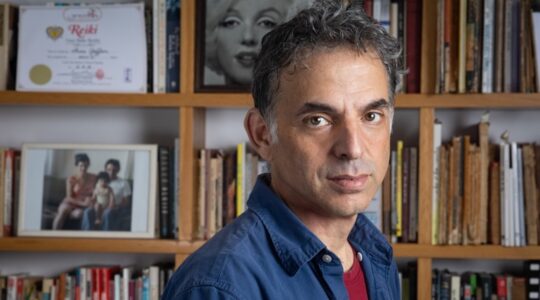
Every year, the Hebrew calendar date of 27 Nissan is set aside as Yom Hashoah, the annual day of remembrance for the victims of the Holocaust. In Israel, a siren wails and traffic comes to a halt as people pause to solemnly reflect on lives lost.
How we arrived at this date is something many take for granted.
[[READMORE]]
On Yad Vashem’s website, an essay written by Yael Novogrodsky in 2006 (in Hebrew) chronicling Holocaust remembrance days in 2006:
A number of dates have been fixed to designate a memorial day for the Holocaust: Holocaust Remembrance Day, 10th of Tevet and [in 2005] an additional memorial day was fixed, January 27. Each of these days of remembrance was set for difference reasons: Holocaust Remembrance Day – a state holiday, 10th of Tevet – a day of saying public kaddish, and January 27 – an international day of remembrance to memorialize the Holocaust.
In 1946, the year after World War II, many smaller memorial services were held in Europe. JTA noted a May 10 service in Theresienstadt, for example.
Novogrodsky also notes that in 1946, a different official date emerged as a front runner for an annual day of remembrance– the 14th of Iyar. JTA reported this development from Munich less than a week before the proposed date:
Munich, May. 9 (JTA) –
The Central Jewish Committee of Germany, representing the displaced Jews, today announced that the 14th day of the Hebrew month of Iyar, which falls on May 15 this year, has been designated as an annual memorial day for the martyred Jews of Europe.
The announcement, which said that the day would also commemorate the liberation of the survivors, called upon Jews throughout the world to mark the date by appropriate observances. The American Jewish Conference in New York has issued a call upon all Jews throughout the country to observe May 15th with services to memorialize the Jewish dead and to express solidarity with the survivors of European Jewry.
The date was chosen because it commemorated the date that the Landsberg camp was liberated. Remarkably, the event at Landsberg was marked by a mixture of solemnity and celebration:
Landsberg, May. 15 (JTA) –
All displaced Jews in the American zone of Germany today observed the first anniversary of their liberation from the Nazis and mourned the millions of Jews who were murdered.
In the Landsberg camp, more than 4,500 displaced Jews marked the observance with a torchlight parade in the evening within the camp. Young people, carrying blue-white flags and singing Hatikvah, marched past a stand occupied by UNRRA officials. They were addressed by Dr. Samuel Gringaus, leader of the camp. Huge bonfires were set later and various groups sang and danced.
The first 30 refugee nurses to be graduated from the hospital which the displaced Jews have established in the Landsberg camp received their diplomas tonight.
In January 1949 — the first time Israel would commemorate the Holocaust as a modern state — the Chief Rabbinical Council of Israel designated the tenth of Tevet, an existing fast day in the Hebrew calendar, as a universal day of mourning:
A special memorial light will be kindled tonight and tomorrow in every Jewish home and synagogue. The Kaddish prayer will be recited in public except by those with two living parents. A special memorial service will take place in the Great Synagogue here in which participants will fast and recite traditional memorial prayers. Special religious services will also be held in Israeli Army camps.
At the suggestion of Rabbi Mordechai Nurok — member of the first Knesset and a Holocaust survivor (pictured above) — the fixed Hebrew calendar date of 27 Nissan was established on April 12, 1951. This day of memorial was signed into law as "Yom HaZikaron LaShoah veLaGevurah.
Photo: PORTRAIT OF RAV MORDECHAI NUROK, N.R.P. Nov. 1951 by Teddy Brauner. (Israel Government Press Office – National Phot Collection)
JTA has documented Jewish history in real-time for over a century. Keep our journalism strong by joining us in supporting independent, award-winning reporting.





